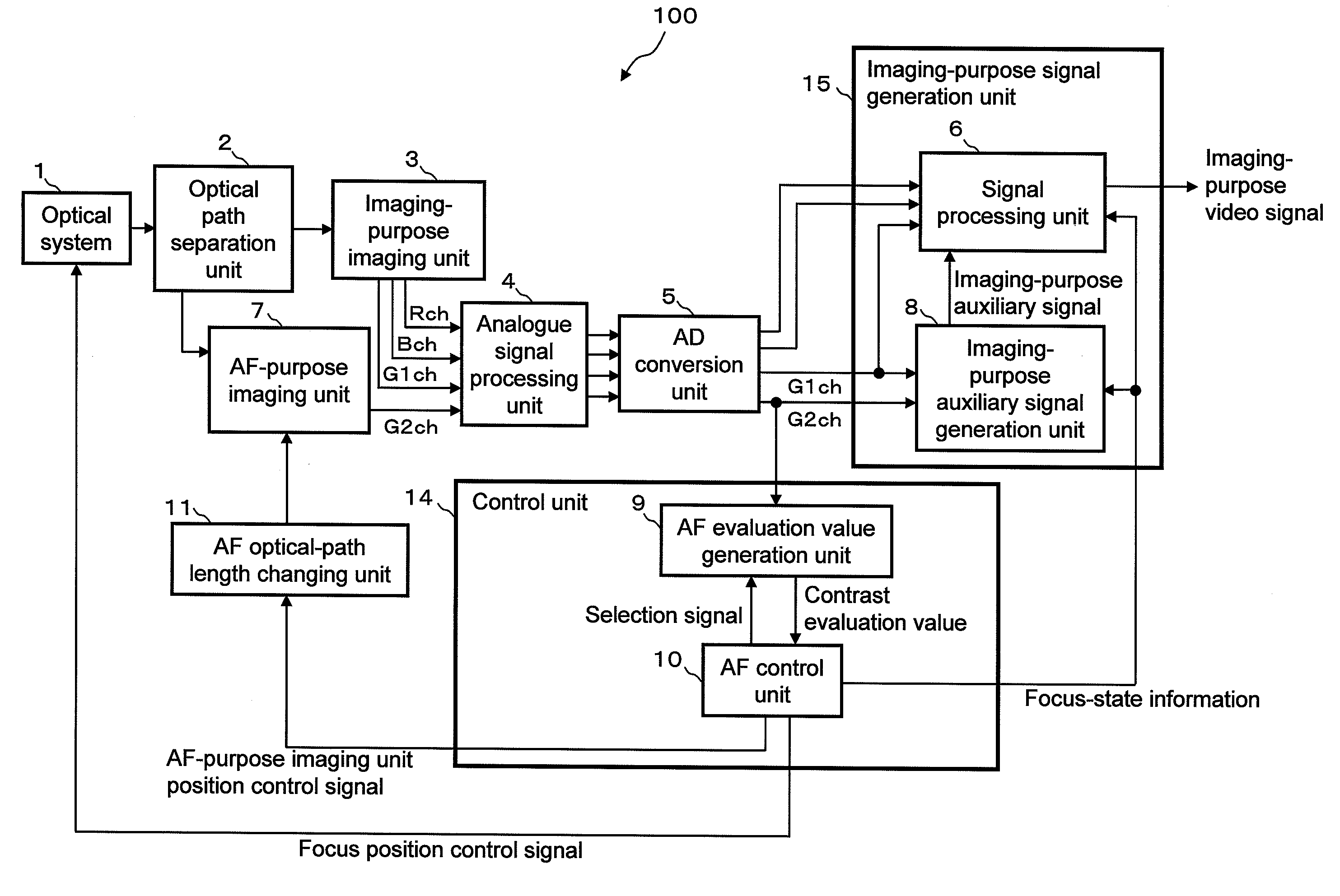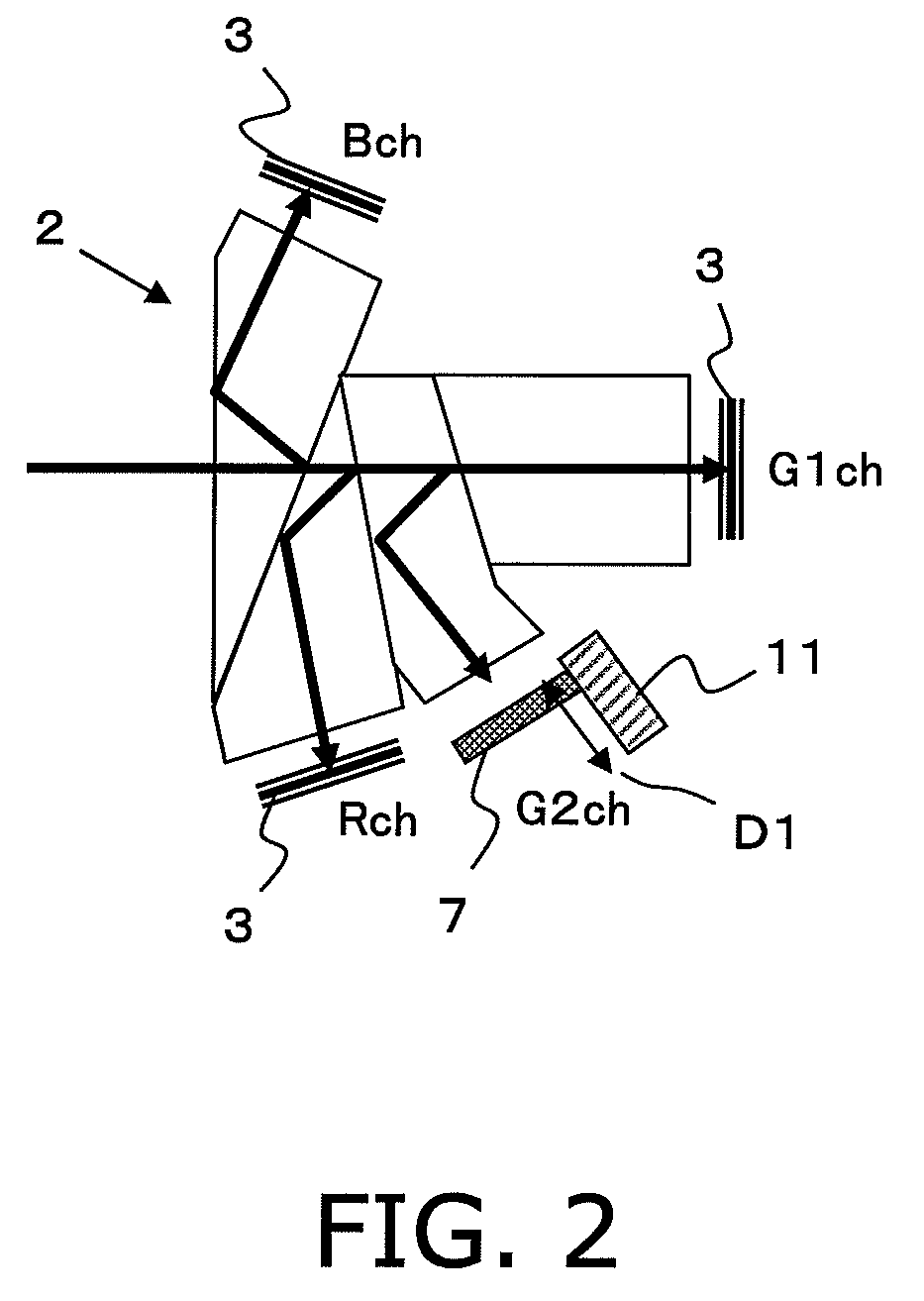Imaging apparatus with autofocus function, imaging method, storage medium, and integrated circuit
a technology of imaging apparatus and function, applied in the direction of instruments, printers, cameras, etc., can solve the problem that the imaging apparatus only has a limited capability of detecting in-focus positions, and achieve the effect of maximizing the optical path length
- Summary
- Abstract
- Description
- Claims
- Application Information
AI Technical Summary
Benefits of technology
Problems solved by technology
Method used
Image
Examples
first embodiment
1.1 Structure of the Imaging Apparatus
[0055]FIG. 1 is a block diagram showing the structure of an imaging apparatus 100 with an AF function according to a first embodiment of the present invention.
[0056]As shown in FIG. 1, the imaging apparatus 100 with the AF function includes an optical system 1, an optical path separation unit 2, an imaging-purpose imaging unit 3, an analogue signal processing unit 4, an AD conversion unit 5, an imaging-purpose signal generation unit 15, an AF-purpose imaging unit 7, a control unit 14, and an AF optical-path length changing unit 11.
[0057]The optical system 1 focuses light from a subject, and can adjust the focal length (focus position) of the light (light beam) from the subject. In other words, focus control can be executed over the optical system 1. Focus control over the optical system 1 is executed based on a focus position control signal output from the control unit 14. The optical system 1 outputs the focused light (light beam) from the sub...
second embodiment
2.1 Structure of the Imaging Apparatus
[0119]FIG. 6 is a block diagram showing the structure of an imaging apparatus 200 with an AF function according to a second embodiment of the present invention. The imaging apparatus 200 of the present embodiment differs from the imaging apparatus 100 of the first embodiment only in the position at which an image sensor of its AF-purpose imaging unit 12 is arranged and a signal processing method used by its signal processing unit 13. More specifically, the imaging apparatus 200 differs from the imaging apparatus 100 only in that an image sensor for G2 included in the AF-purpose imaging unit 12 is fixed at a position optically completely equivalent to the position at which an image sensor for G1 included in an imaging-purpose imaging unit 3 is arranged, and in that the signal processing unit 13 uses, in an in-focus state, a signal processing method of generating an imaging-purpose video signal after adding together an imaging-purpose auxiliary si...
PUM
 Login to View More
Login to View More Abstract
Description
Claims
Application Information
 Login to View More
Login to View More - R&D
- Intellectual Property
- Life Sciences
- Materials
- Tech Scout
- Unparalleled Data Quality
- Higher Quality Content
- 60% Fewer Hallucinations
Browse by: Latest US Patents, China's latest patents, Technical Efficacy Thesaurus, Application Domain, Technology Topic, Popular Technical Reports.
© 2025 PatSnap. All rights reserved.Legal|Privacy policy|Modern Slavery Act Transparency Statement|Sitemap|About US| Contact US: help@patsnap.com



